Does the Moustache J mark a breakthrough innovation in bike frame manufacturing? In search of sustainability, there is a lot of hope for innovative aluminium and carbon production methods. Leading the charge is the new Moustache J Fully step-through ebike, amongst others, and it’s made entirely in France. We took an exciting look behind the scenes!
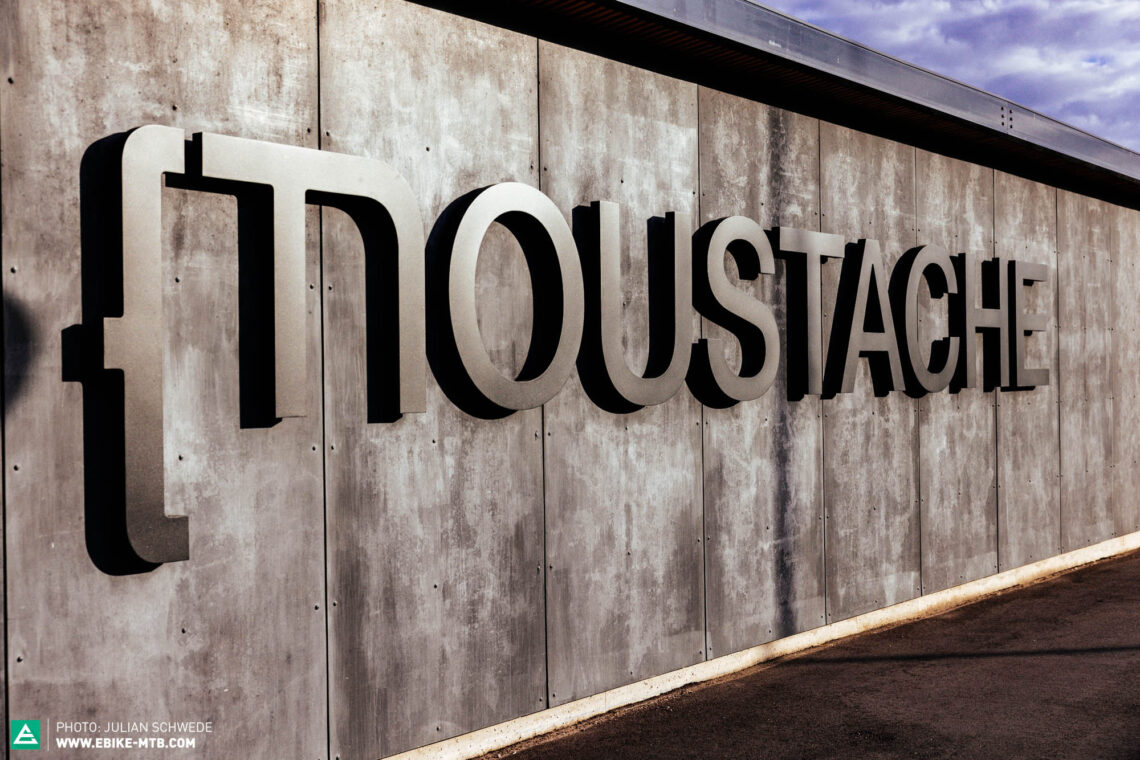
The idea for the new concept of a cast aluminium ebike came from Emmanuel Antonot, a.k.a. Manu, co-founder of Moustache. His dream was to build a full-suspension step-through ebike using a novel manufacturing process. In doing so, Manu presented the development and manufacturing teams involved with a tremendous challenge. To find out what’s inside the J and how it’s made, we followed the entire production chain through four different companies. Of course, we seized the opportunity to test-ride a couple of the models on home turf while we were there.
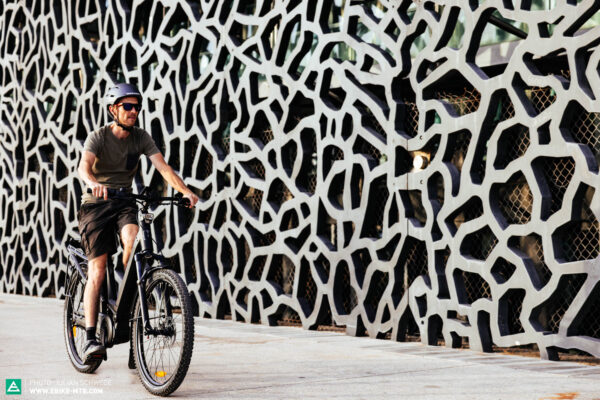
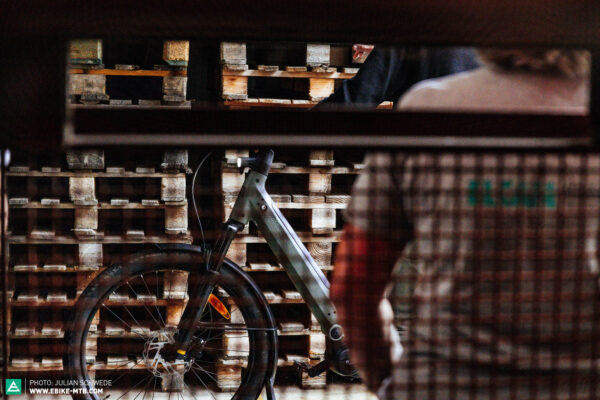
Moustache have always been a little different. The French brand have developed and designed a wide range of models, though focusing exclusively on ebikes. From eMTBs to e-SUVs, e-road bikes, and even an e-tandem (WTF?). However, the brand are venturing into new territory with the J: a full-suspension step-through. But that’s not all: the frame is made entirely in France, and instead of a conventional, welded aluminium frame, it consists of two cast aluminium parts – the main frame and the rear end. Both parts are cast in Marseille from European aluminium (plus smaller pieces like dropouts and seat post clamp), then reworked in the French Jura using a CNC machining process, and powder-coated near Strasbourg, before the bikes are finally assembled in Thaon-les-Vosges in the Moustache HQ. These four French stops are the key to significantly shortening the distance of the bike’s production chain and thus its carbon footprint.
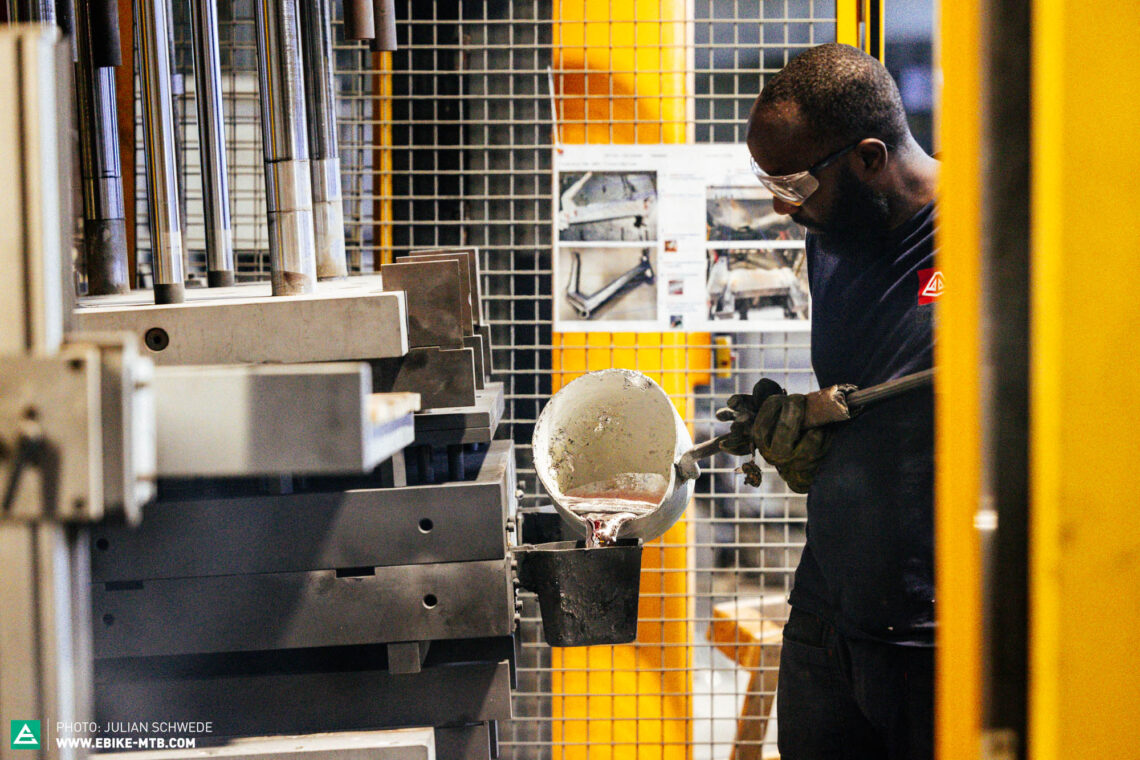
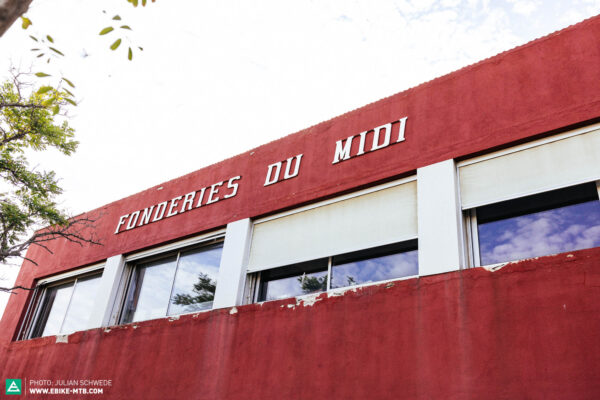

From a block of aluminium to a bike frame
There used to be 20 foundries near Marseille, but today the Fonderie du Midi, founded in 1950, is the only one of its kind. The foundry started with the production of Boules balls, but today focuses on the production of helicopter and tractor castings as well as components of France’s high-speed train, the TGV – all in small batches, never resorting to automated mass production. Even though the Fonderie du Midi has a long history in the bicycle industry, casting magnesium forks for Hurrycat, and aluminium bike parts for Vitus, the production of an entire frame was new territory.
The collaboration with Moustache began three years ago. The development of the J-frame initially presented the foundry with a major challenge as it usually only does gravity casting, and there’s a lot to consider with such a large and complex component as a bicycle frame.
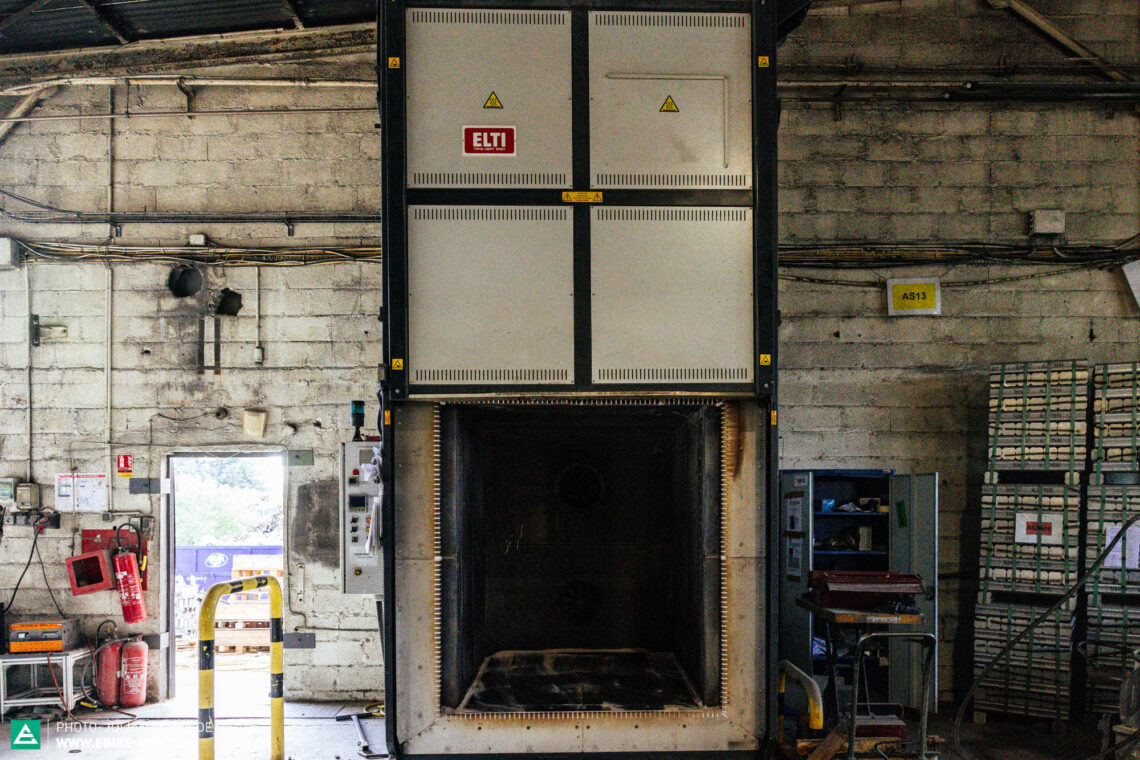
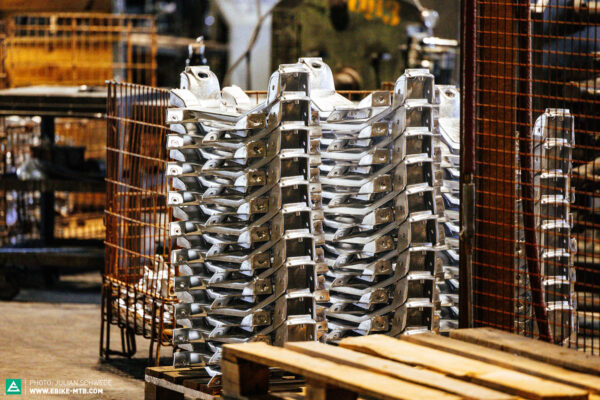
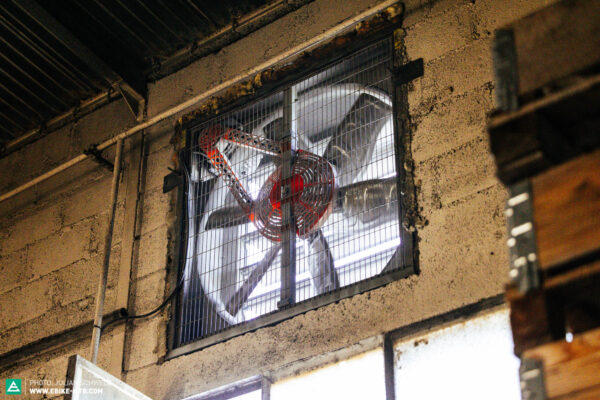
The production process starts with raw aluminium, sourced mainly from France and Italy, which is melted down in the Fonderie du Midi. Forming the core of the ebike frame, which must remain hollow, is a positive mould made of sand and resin. This mould is placed between two steel negatives, into which the liquid aluminium is poured at around 800° Celsius. After about 5 minutes, the frame is mostly hardened and a machine presses it out of the mould. The frame is then baked in an oven at 400° Celsius for 8 hours, thereby melting the resin/sand core inside of it and homogeneously annealing the aluminium. Doing so relieves internal stresses and achieves uniform strength. Any remaining sand or excess material is removed before the frame undergoes another 6 hour heat treatment at 550° Celsius. The cast frame is then quenched in cold water to harden. Before the casting is subjected to CNC machining, it’s checked for warping.
The cast frame parts proved to be three times as strong as the required minimum standard in the lab, which is why Moustache offers a 10-year warranty on the frame. The foundry can cast around 100 frames per day.

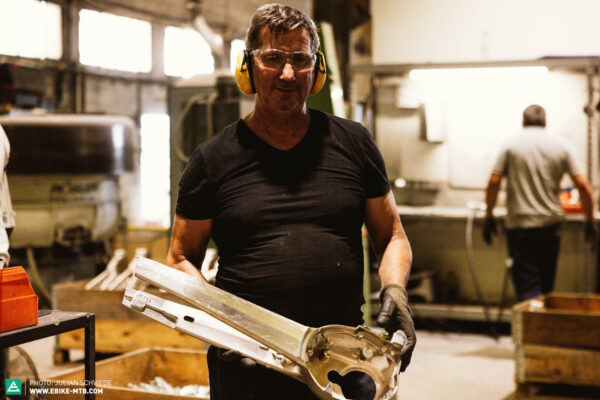

CNC machining at ELCAM USINAGE
The idea of casting a complete bike turned out to be more demanding than expected – cast surfaces are very rough and not always perfectly uniform, and things like holes for the bottom bracket, steerer tube, or shock mounts can never be cast as precisely as necessary. Therefore, machining is necessary to achieve the final finish. Preparing for the most extensive machining step in the manufacturing process required 1.5 years of intensive development work by all parties involved. These include ELCAM, who are responsible for the CNC post-processing. After the first prototype was cast, ELCAM had to test new approaches as machining the frame proved to be more complex than with other parts. Making matters worse, the castings never come out of the foundry exactly the same, and they have few flat, straight surfaces to use to clamp them in place for machining. As such, ELCAM developed a special clamping device for the Moustache project in order to guarantee consistently accurate machining.
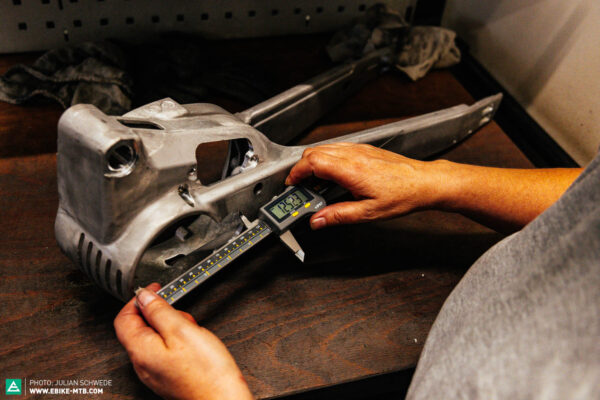

The machining is carried out by a single 4-axis CNC machine. It cuts all the required holes and threads, like those for the shock mounts, without having to realign the frame. The main frame requires 21 different tools and around 55 minutes to machine. It takes another 25 minutes of machining for the swingarm, followed by manual labour to deburr and sand the frame. A high-precision machine then checks the frame tolerances randomly in an insulated, air-conditioned room. All in all, the CNC machining is a very lengthy process.
In order to achieve a precise, uniform end result, the engineers at Moustache and ELCAM had to cooperate very closely. The development team consisted of 2 developers from ELCAM and 5 production employees from Moustache. They were particularly proud of the fact that the frame can be machined in a single operation. Unfortunately, we weren’t allowed to take detailed photos of this step ;).
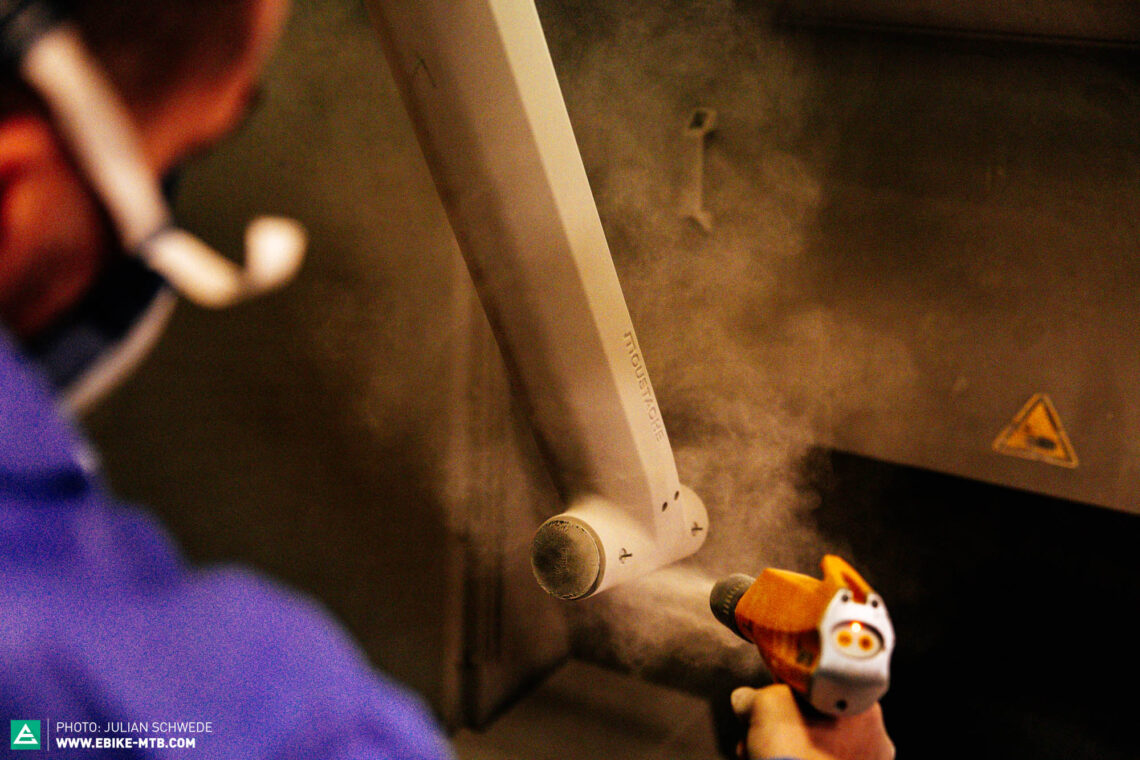
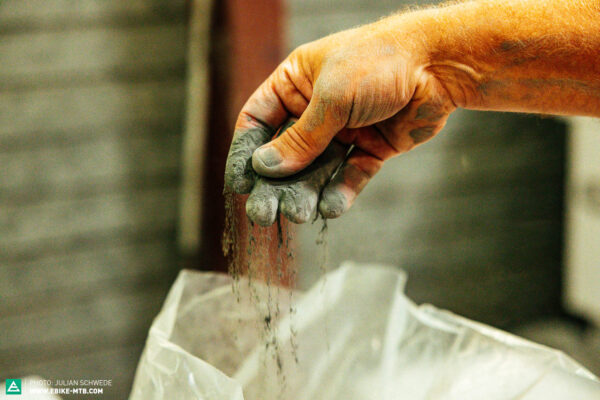


Colouring in – Powder instead of paint
After CNC machining, the cast aluminium frame retains its rough cast surface everywhere where there is no machining required. This is difficult to cover with liquid paint, which is why Moustache opted for solvent-free powder coating to protect the frame and maintain the look – the rough cast surface remains and the fine powder is capable of reaching all nooks and crannies thanks to the way it’s applied. The Colibru coating company is a subsidiary of Fonderie de la Bruche, where Moustache originally wanted to do the CNC machining. This didn’t work out, but they agreed to take care of the powder coating, nonetheless.
But what are the individual steps involved? First, all holes and threads that shouldn’t get coated are covered or taped off, then the frame receives an acid bath and rinse, to remove any contaminants before coating. All components to be coated are then passivated: this creates a protective layer against corrosion and maintains the electrical conductivity, which is important for the actual powder coating. A negative charge is applied to the frame components, while the paint particles are positively charged. This ensures that the powder clings to the frame components as if by a magnet and really gets in everywhere. It also coats rough surfaces such as those on cast components flawlessly. The powder only adheres to the frame due to the negative charge, but the subsequent baking at 200° Celsius for 15 minutes hardens the powder and virtually fuses it with the frame.

The whole process takes three hours in total, but up to 250 frames can pass through the conveyor simultaneously. Finally, the plugs that covered the important threads and openings are removed and the coating is subjected to a visual inspection before the frames are wrapped back up and sent to Moustache’s headquarters.
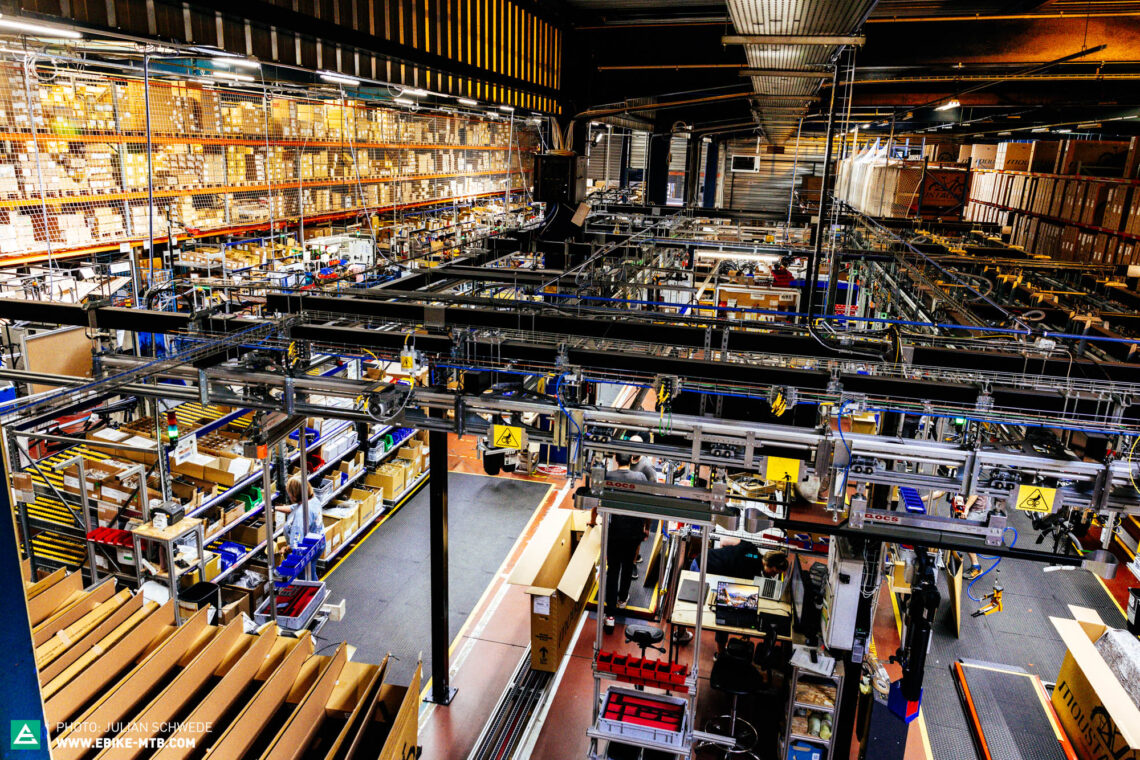

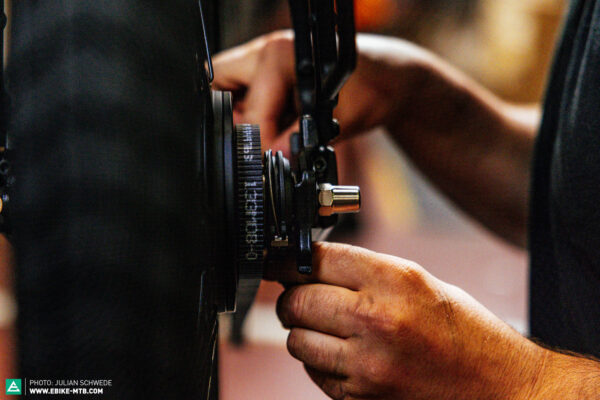
Many small components become a large whole – Assembling the Moustache J
Moustache Bikes are based in Thaon-les-Vosges, near Épinal. Moustache are one of the largest employers in this town of 32,000 inhabitants, with around 200 employees, of whom about 80 work in production. The company was founded in 2010, and in 2022 they generated a turnover of 130 million euros and produced 64,000 bicycles. They have enough capacity to produce up to 100,000 bikes per year, and the French brand are striving to expand this even further, with increasing automation of the production lines.
The assembly lines are named after their home town and consist of Thaon 1, 2 and 3. At Thaon 3, the bikes hang from rails on the ceiling and move along the assembly line from employee to employee like on a conveyor belt. Moustache even lace their own wheels – partly manually and partly by machine.
Of course, Moustache also invest a great deal of effort in the development of new bicycles. They have a team of 25 employees involved in product development. The goal of making the J look so simple was a big challenge that was more complex than it might seem at first glance. According to Moustache, the production of a welded step-through ebike from the Far East would have been significantly cheaper than production within France, for example. For the J, they had to set up special testing facilities in order to test the cast frames before getting their official certification, allowing them to increase the test forces beyond the standard. The J frame is up to 3 times stiffer than a conventional welded frame – persisting through figuring out the production process paid off.
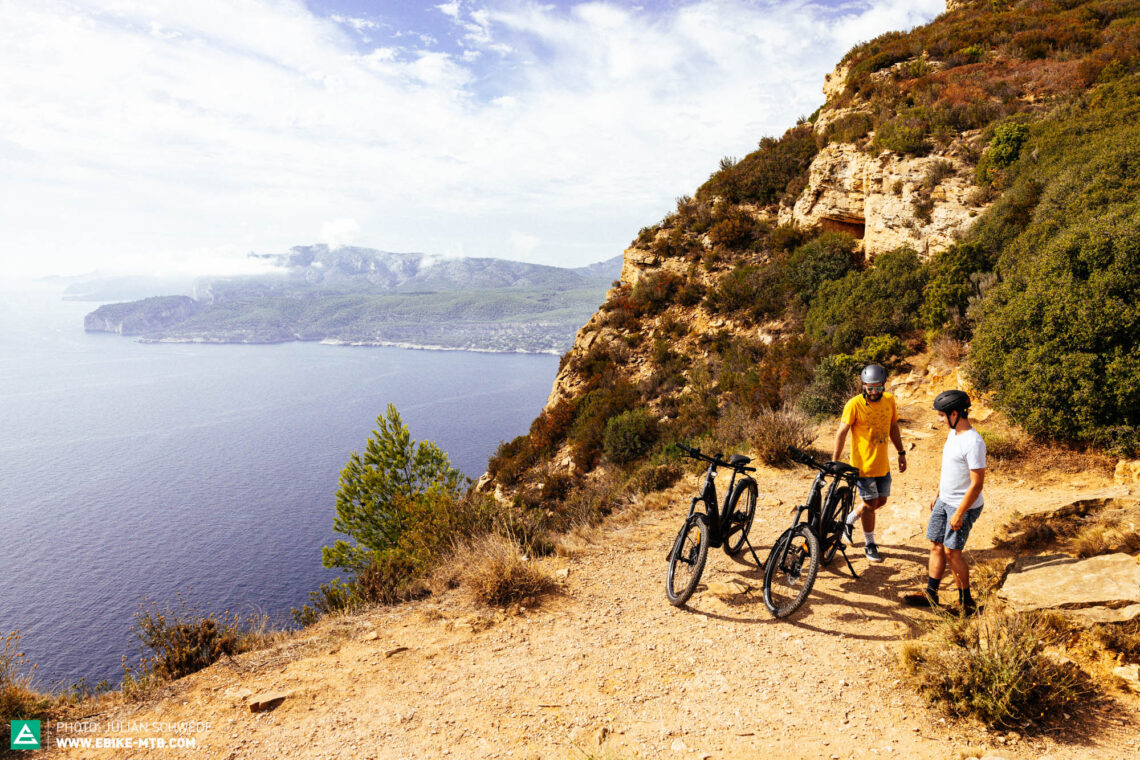
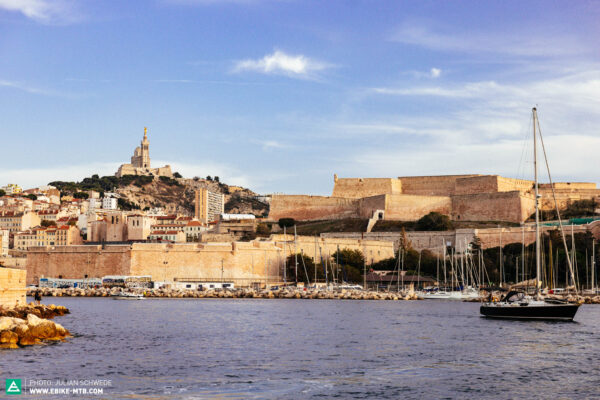
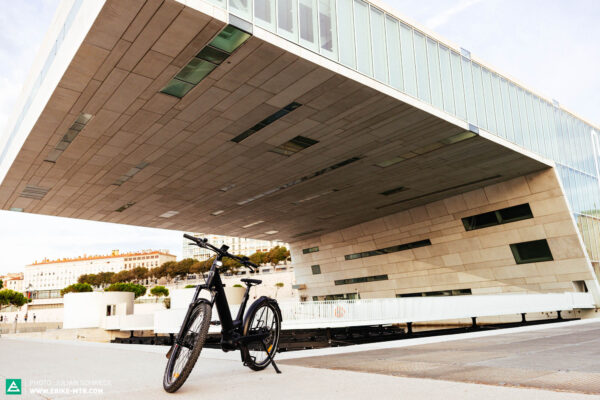
From production to the road
Of course, we had to test ride the new Moustache J on its home turf in France. The Moustache J is available in three variants: On, All, and Off (-road). In line with their respective names, the models are specced to cope with different terrain, although the Off was not yet available at the time of our visit. Our journey began in Marseille, at the molten metal origin of the J. Here, the coastal promenade and the mix of modern architecture and narrow alleys invite you to cruise along without any particular destination in mind – which we did, aboard a Moustache J On, and a J All. The hilly coastal landscape around Cassis, 30 minutes northeast of Marseille, is so high above sea level that the Bosch Performance Line motor has its work cut out for it to get us up there. However, the view more than compensated for the tired legs and drained battery.
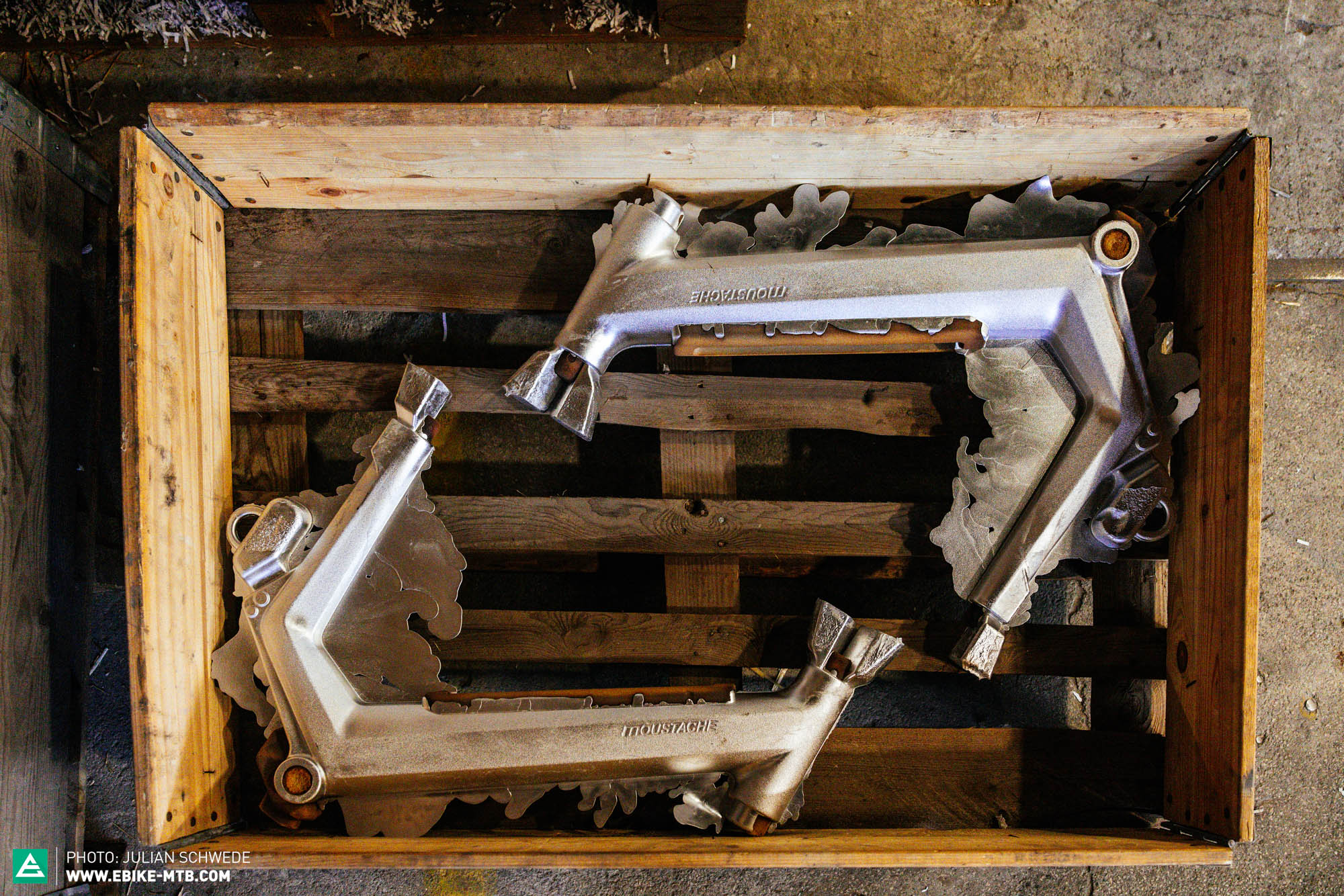
We also rode around in Thaon-les-Vosges. Here you can cruise along the picturesque Moselle or branch off into the low mountains of the Vosges. For the latter, the Moustache J Off would undoubtedly be the best suited, available from October. But no matter which model you choose, you get a uniquely made bike with a striking look, made entirely in France.
Moustache’s new full suspension step-through ebike stands out from the crowd thanks to its unusual frame and production method, cast from aluminium and made entirely in France. Seeing every step of the production process showed how much development work, passion, and idealism the company have invested into the J project, and the immense effort put into building each individual bike. Chapeau Moustache.
More info: moustachebikes.com
Did you enjoy this article? If so, we would be stoked if you decide to support us with a monthly contribution. By becoming a supporter of E-MOUNTAINBIKE, you will help secure a sustainable future for high-quality cycling journalism. Click here to learn more.
Words: Julian Schwede Photos: Julian Schwede









